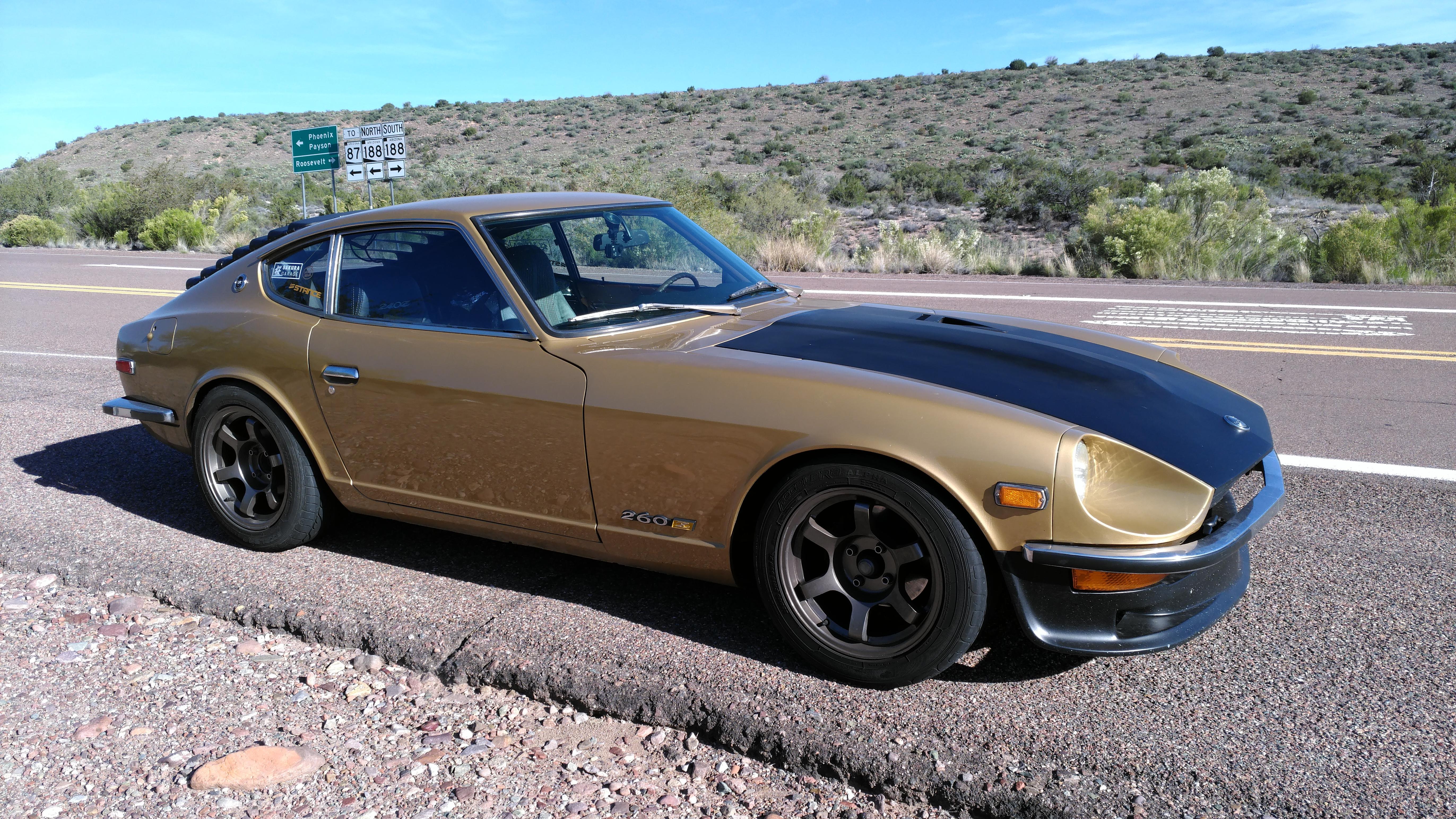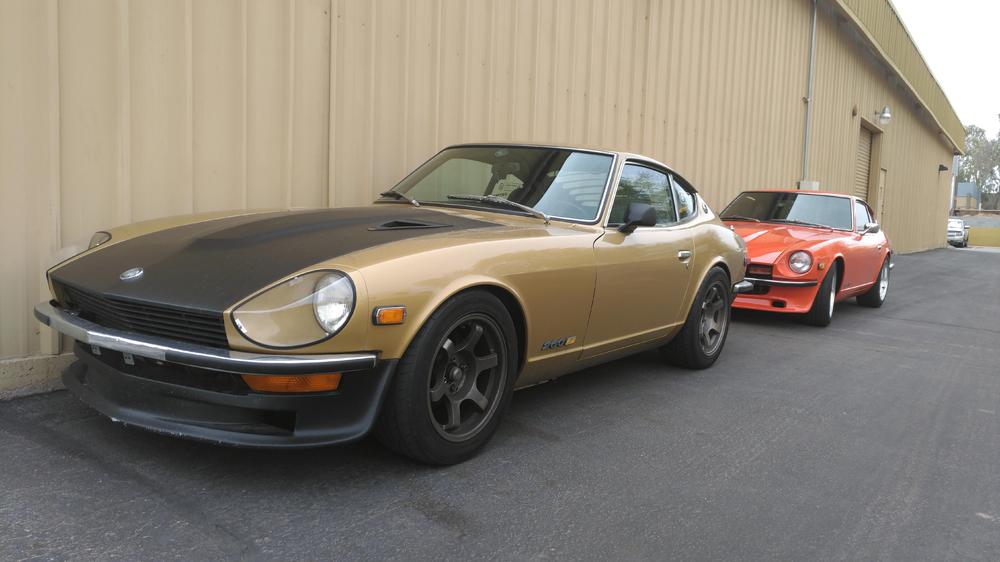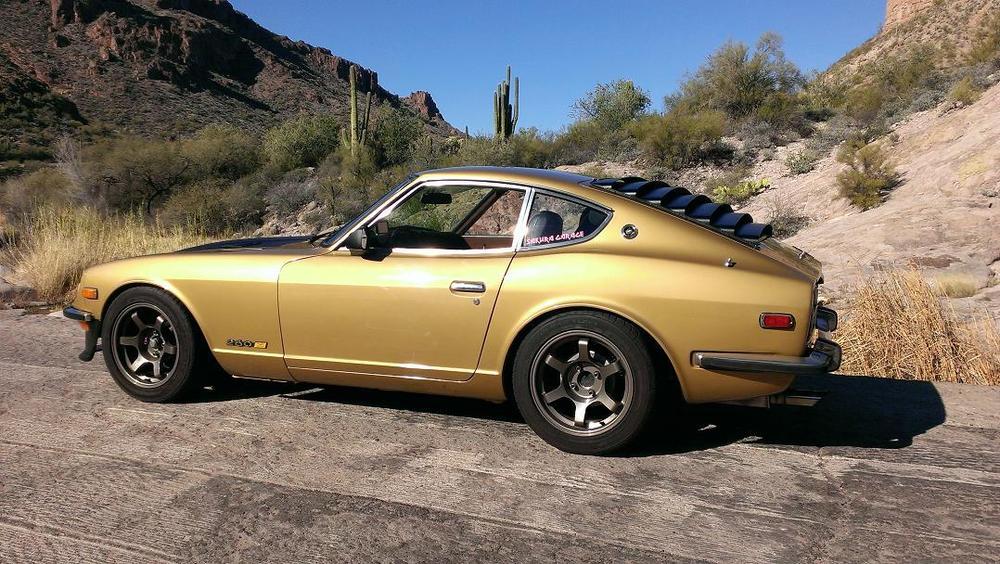
Everything posted by cgsheen1
-
What engine do I have?
We've seen stock L28E 280Z's on the dyno running from in the 90's RWHP to 110 RWHP - depending on condition. (don't be dismayed, a Z doesn't need much to make it fun to drive...)
-
280Z Requires Starting Fluid for Cold Starts
You can buy new connectors and pins from vintageconnections.com. You'll need a crimping tool and some patience but replacing those corroded spades will be much better than cleaning them. It's not hard to de-pin those connectors either...
-
L28 from 82 ZX teardown
We actually have the correct engine block color. Years ago we took an unmolested part to one of our paint suppliers and had them match color and save the formula. I have the paint in single stage for brush-on (or HVLP) and they also make spray cans. We've painted blocks both ways and I find it easiest to brush-on the block and spray parts like pulleys, brackets, and idler parts. IDK if I'm ready to sell and ship block paint, but not painting a block in stock Datsun Blue is one of my OCD triggers...
-
280Z Requires Starting Fluid for Cold Starts
I'm wondering if the ECU isn't getting a good "the engine is turning now - you can start firing the injectors" signal when it's cold. Does your Tach show RPM while cranking? Also, have you checked the ECU plug and socket connections for oxidation. (Going back to the "90% of the problems I've found in these old EFI systems have to do with wiring and connectors"...)
-
304 Gold Metallic
Looking good! Get the 304 shot over dark grey sealer and you'll be happy with the result. Mine was originally brown metallic (my youngest son's '76 280Z was 304). He decided to go dark grey on his and I couldn't find a color I liked - so I "stole" his original color (Hey, it was also a stock color offered in '74...). We don't see any Z's that still have 304 around here (most are red or orange). Since we painted mine, I've seen a few that were 304 originally but painted over a different color. 304 stands out...
-
304 Gold Metallic
We (my son and I ran Sakura Garage for 10 years) had a Sherwin Williams Automotive outlet near our shop in Tempe. We bought most of our primer, sealer, and base coats from them. They have all the early Datsun codes and match pretty faithfully IMO. Never liked their clearcoat. We used PPG DCU-2021 for the most part. That's the clear on my 260 - my son shot it in 2012 and it's held up well in the Arizona sun. (My son shot the 304 over dark grey sealer - it added "depth" to the color. Shot over lighter primer or sealer, 304's tone is lighter and a little "washed out")
-
304 Gold Metallic
-
304 Gold Metallic
- 350 Short Block A/C - can it work with 260z?
A good hose company will be able to make whatever you need.- Leather fuel flap, anyone sell one?
Yup- 4spd transmission synchroniszer early Z
I heard one time that it's important to "lap" new baulk rings (synchros) in when installing. True? (like you would lap a valve?)- Replace heater core
Mine was the heater core itself but my on my son's '76 it was the valve. He replaced the valve and hoses. I'm an Idaho boy in Arizona so I've never needed a heater - mine is blocked off... I'm not looking forward to replacing that heater core. Check it all though, you'll only want to do it once.- Cleaning up loose ends on my harness, can't figure out this blue wire!
I believe that blue wire should have a Female Bullet connector on it's end. (that's what I have in my notes) It ties to the RL (Red/Blue) wiring for the gauge lighting but I'm not positive what it connects to in/near the center console... It will (should) have battery voltage when the lighting is on. As far as I know it would have nothing to do with A/C. My best guess would be Radio lighting... (I just built a new 240Z dash harness and ran into this exact thing. I have pictures of the same connections from the stock harness - I had to chuckle when I saw your pics...)- thoughts on 5spd and diff combos
I ran my stock 3.36 R180 with a close ratio ZX 5-speed in my 260Z for years before swapping the diff to an 3.54 R200. I loved it, but it was also sitting behind an L28ET so, big torque difference. Like Dave, I now run 3000 RPM at 80 MPH. But, I've always believed that you use the lower 4 gears for spirited driving - 5th for cruising.- Temp readings FYI
No wonder Nissan started using a fuel temperature sensor on the VG30E...- F54/P79 Swap Project
Me too...- The stronger one, 4- or 5-speed?
I doubt there is, the early 5-speed uses the same basic parts as the 4-speed and adds an overdrive gear. I've used a late 280ZX close-ratio Nissan 5-speed behind my L28ET for several years but I'm relatively easy on it... I also have a T-5. Want me to ship it to you?- Under hood light
My son resin printed me some. Not perfect, but cheap.- Assessing Manual Transmission Condition
That's what's in my close ratio right now. Although many have reported good results with Redline, it didn't work well in mine. IDK why. I'm going to try the Delco Friction Modified gear oil next change.- Steering wheel parts
It holds the padded horn "button" in place.- Parts Wanted: 1977 Datsun 280z Clock Wanted
If you're still looking, I'll go through my stash. I have a few working clocks but I think they're mostly from earlies. '77-'78 are pretty rare here. I do have a working original '78 Quartz clock but I don't know that I want to give that up...- 1972 Z intake manifold smog plug sizes
I'm blinded...- Assessing Manual Transmission Condition
That's correct - and the shift lever has a spring and different bushings than the early transmissions.- Bright Links On Timing Chain - Line Up Every 11 Rotations
11 bothered me because it's not an even number. 11 turns of the crank turns the cam 5.5 turns, right? How can the dot line up with the link other than on a full turn? 110 chain links / 40 teeth on the cam = 2.75 cam revolutions for one complete chain revolution. 2 complete chain revolutions = 5.5 cam revolutions. 4 chain revolutions = 11 cam revolutions. 11 cam revolutions = 22 crank revolutions. 11 cam revolutions * 40 teeth = 440. 22 crank revolutions * 20 teeth = 440. 440 is the first number we can get to that is evenly divisible by 110 chain link holes, 20 crank teeth, and 40 cam teeth - isn't it? (110, 220, 330, 440) Somebody check my math - and logic... (11 cam revolutions bothers me - because it isn't even.)- 75 280Z won't run.
What?? And that makes sense to you why? - 350 Short Block A/C - can it work with 260z?
Important Information
By using this site, you agree to our Privacy Policy and Guidelines. We have placed cookies on your device to help make this website better. You can adjust your cookie settings, otherwise we'll assume you're okay to continue.






